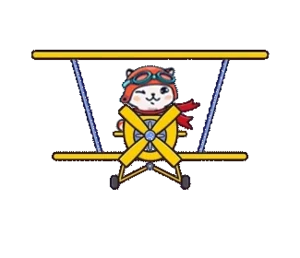!historychads !engineering for those of you who don't know, the glorious República Argentina was the first country in Latin America to build a jet aircraft.
The footage I linked is from the FMA IAe 33 Pulqui II, this was a fighter jet prototype and the second Río-Platense jet aircraft (the first was the Pulqui I)
Pic of the Pulqui I
So our story begins in Nazi Germany  , Kurt Tank was a German aeronautical engineer who worked for Focke-Wulf. He designed the Focke-Wulf FW-190 which was the Third's Reich second most produced fighter (only behind the Messerschmitt Bf-109), and one of the backbones of the Luftwaffe.
, Kurt Tank was a German aeronautical engineer who worked for Focke-Wulf. He designed the Focke-Wulf FW-190 which was the Third's Reich second most produced fighter (only behind the Messerschmitt Bf-109), and one of the backbones of the Luftwaffe.
Tank also designed the Focke-Wulf Ta-152 a high altitude interceptor which could reach 33,000 ft heights, though it's first flight was in January 1945, so like most of Hitler's wunderwaffen it was both, late in the game and useless against hundreds of B-17s and B-24s.
The krauts were pretty early in the game of jet aircraft design. The first ever jet aircraft was the Heinkel He-178 which flew for the first time in 1939, but the most famous of kraut jet-fighters was the Messerschmitt Me-262.
The Me-262 entered service in September 1944 and despite the fancy Jumo 004 engines, the planes were no match for the P-51 Mustang. The Reich Ministry of Air also asked for designs to succeed the Me-262, one of them was the Focke-Wulf Ta-183, designed by Tank.
As you can see, it's the basis design of second-generation fighter jets like the Mig-15 and the F-86 Saber. The Ta-183 was never built.
Tank left Europe and migrated to Argentina, in 1945 Juan Domingo Perón became President and he was interested in acquiring German engineers. Argentina had a aeronautical state-owned company named "Fábrica Militar de Aviones" or FMA which still exists under a different name. Back during the good ol' days of the Junta the FMA designed a 4th gen fighter plane which never left the design phase, the FMA SAIA 90.
But that's another story of another even more delusional project.
In 1947 the FMA produced the Pulqui I, a jet aircraft designed by a French Engineer, Émile Dewoitine (a guy of left France after being ousted as a collaborator during WW2). However the Pulqui I was cancelled early on as it had autonomy problems caused by excessive fuel consumption and its design was outdated. The FMA then begin the design of a new plane which would make use of the new Rolls-Royce Nene II engines. Enter Kurt Tank.
Tank was placed as head of the program and he basically adapted the Ta-183 design for the Nene II engine. In 1948-1949 two prototype gliders were build with the help of another German engineer, Reimar Horten, who along his brother designed the Horten Ho-229, a jet-powered flying wing. That thing actually was build and flew a few times in 1945.
The problem with production was that Argentina lacked infrastructure and modern machinery/equipment to build this sort of plane (it gets worse when you consider mass production scale), so the metal fabrication was all manual and labor-intensive.
The first prototype of the Pulqui II was completed in 1950, its maiden flight took place on June 27, piloted by Edmundo Weiss. During the second flight, piloted by a German test-pilot (who also worked for Focke-Wulf) Otto Behrens, problems with stability surfaced at speeds above 700km/h (435mph), lading the aircraft was also tricky. The prototypes also stalled a couple of times but they recovered thanks to being at high altitudes. In February 1951 Tank presented the Pulqui II to Perón and a group of legislators and other Argentine politicels on an air show in Buenos Aires. The demonstration was a success and the Argentinian Air Force ordered 12 Pulqui II units.
During the first flight, the pilot, Commander Soto reported severe vibrations at 1000km/h speeds. Tank said the problem was with that unit in special and that the others were safe, yet the faulty model continued to be operated. A certain Commander Vedannia Manuwal was advised not fly that model after more reports of extreme vibrations, but he told everyone he knew better than everyone else  , so he piloted, pushed the plane through a bunch of maneuvers at high-G forces and… the wing separated from the fuselage. Manuwal successfully ejected but his parachute failed to deploy and he died
, so he piloted, pushed the plane through a bunch of maneuvers at high-G forces and… the wing separated from the fuselage. Manuwal successfully ejected but his parachute failed to deploy and he died 
Modifications were made to the new prototypes. In September 1952 another demo was set to happen before Perón, hoeing the Pulqui II already had a bad reputation among pilots. Just a couple of days before the demo, Brehens stalled the Pulqui II third prototype (the one for the demo), crashed and died.
Fourth time makes the charm and the 4th Pulqui II prototype had added stall fences on each wing and four strakes on the rear fuselage as to avoid deep stall. The Argie Air Force by then intended to buy 100 Pulqui II, however by 1954 Argentina's economy was in turmoil and they couldn't afford the investment required to build a factory, vuy equipment and mass produce the Pulqui II (Perón turned the FMA into a motorcycle and cars factory to generate some income lol). Early in 1955 Perón didn't renew Tank's contract after he requested the double pf money for the Pulqui II program. That same year Perón was overthrown by a military coup, the new regime cancelled the Pulqui II program and decided to buy F-86 Sabers from the US instead as those were cheaper than investing on an aircraft industry and Argentina was bankrupted by then.





.webp?h=8)










Jump in the discussion.
No email address required.
Did they have a specific scenario in mind for how they would use these, like "maybe we'll get in a war with Chile someday"? Or did they just want some jet fighters because they're cool?
Jump in the discussion.
No email address required.
Perón took the ARGENTINA SUPERPOWER pill, he was populoid General who thought "the US and the USSR have jets and are developing nuclear reactors, so we must have them too!" So he wasted millions on projects like Pulqui II or worse, Project Huemul which was an attempt at nuclear fusion by a sketchy Austrian physicist, but it turned out to be fraud and the Mountain Kraut lied about achieving Fusion.
Jump in the discussion.
No email address required.
The jet project was deluded because Argentina never developed the fundamental industrial base to support advanced aircraft tech.
It's telling that they, the Soviets, the Swedes and the US all started from the same framework of German design, and the US Sabre ended up being far and away the best project. By the end of its run the sabre had IR missiles, radar, computer gun sights and a bunch of advanced tech that outclassed stuff that was in Frontline service in other countries into the 70s
Jump in the discussion.
No email address required.
Even back then the avionics was probably the really hard part to make and actually get to work right.
Jump in the discussion.
No email address required.
More options
Context
The Sabre didn't far outclass the Mig-15. The casualty ratios from the Korean war that were quoted for years were straight up propaganda.
Jump in the discussion.
No email address required.
More options
Context
More options
Context
In America fortunately we could afford to put our fingers in every pie at the time. So we could actually choose to not do some of these things. Like supersonic airliners, we decided for a lot of environmental and business reasons that this wasn't worth doing. Meanwhile the Euros wasted enormous amounts of money on building Concorde which was a great airplane but never broke even.
Sadly sometimes it's much harder to get humans to not do anything than to do something stupid.
Jump in the discussion.
No email address required.
I still think Zeppelins are a based technology tree that hasn't maxxed out yet
Jump in the discussion.
No email address required.
There's been a lot of work in the last couple decades on making WW1-style observation balloons again but I think they still have trouble dealing with bad weather.
Jump in the discussion.
No email address required.
I'd like to see beought back to prominence The Belgian artist Panamarenko did a load of concept drawings for a modern one.
The Belgian artist Panamarenko did a load of concept drawings for a modern one.
https://solar.lowtechmagazine.com/2009/02/camping-in-the-clouds-the-aeromodeller-ii/
!nooticers
Jump in the discussion.
No email address required.
More options
Context
RETVRN
Jump in the discussion.
No email address required.
More options
Context
More options
Context
More options
Context
More options
Context
More options
Context
More options
Context